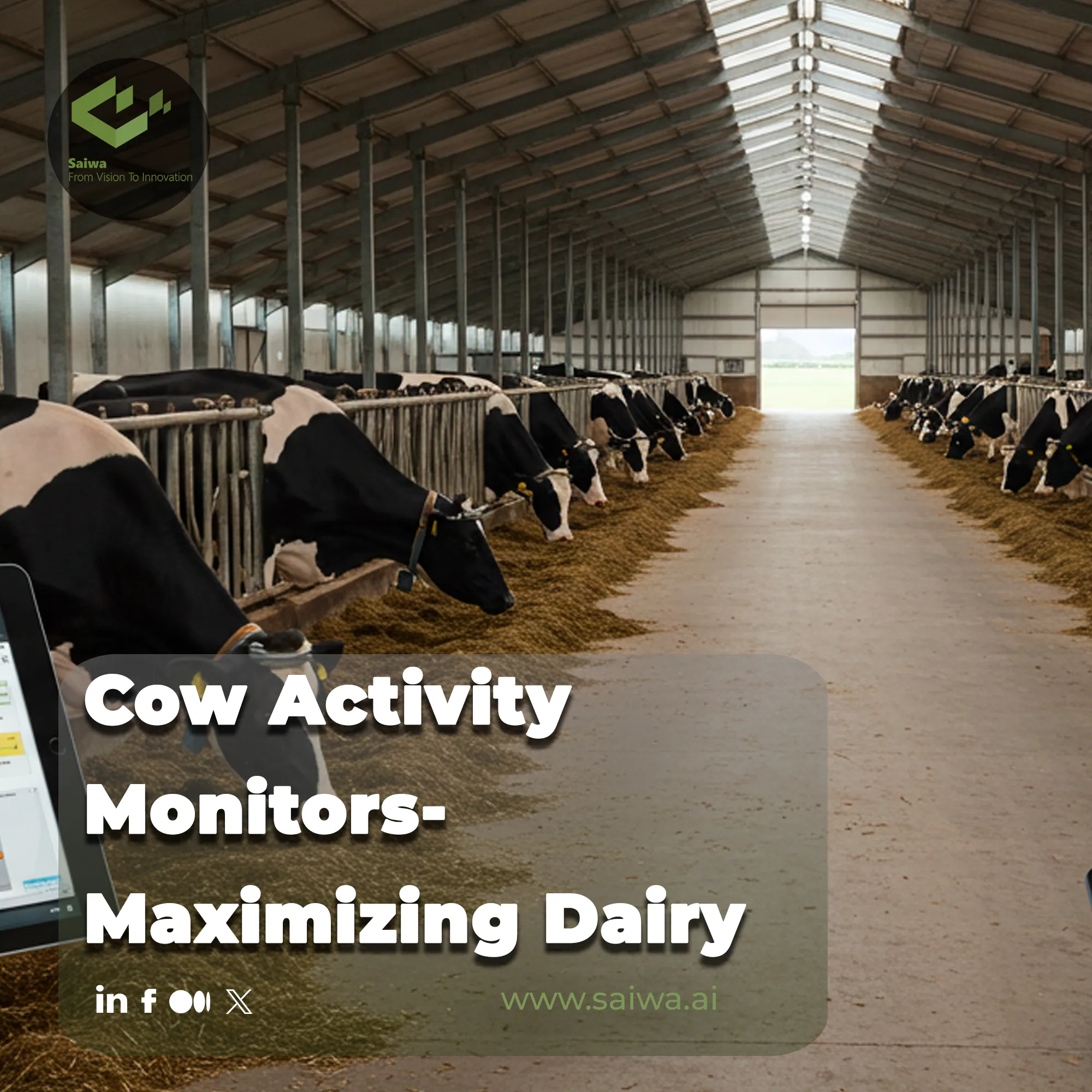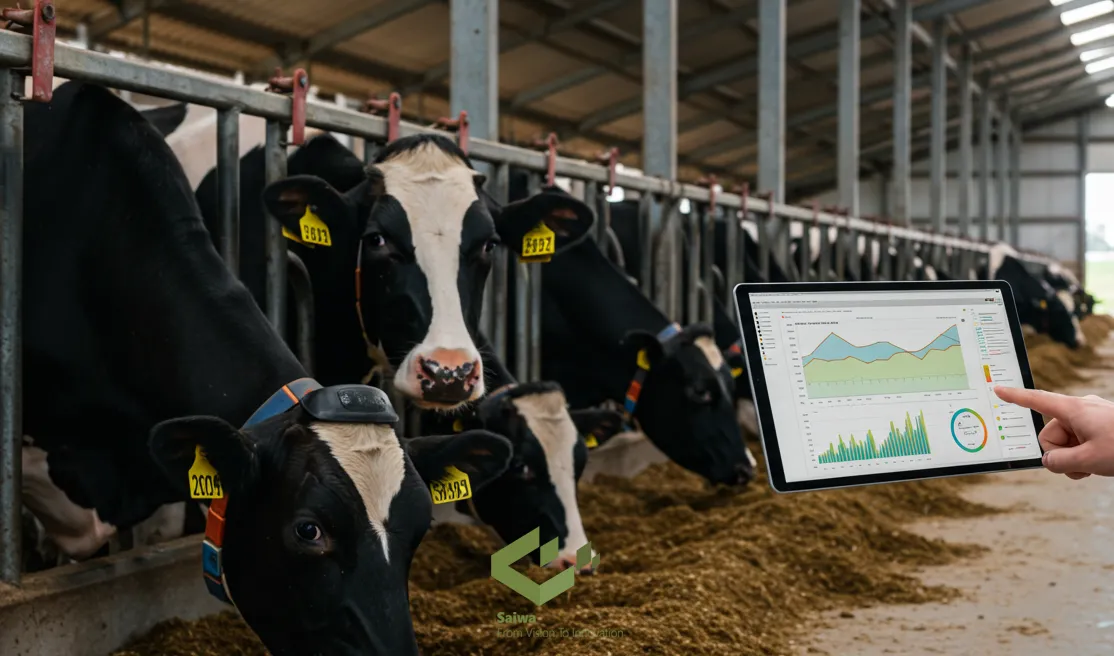Maximizing Dairy Efficiency with Cow Activity Monitors: A Guide for Farmers

The modern dairy industry thrives on precision and timely data. Traditional observation methods alone can no longer meet the demands for peak efficiency. Here at Saiwa, we are dedicated to transforming complex agricultural data into clear, actionable insights for producers.
This guide provides a focused exploration of Cow Activity Monitors, explaining how this pivotal technology empowers farmers. It will help you make informed decisions, improve herd health, and ultimately enhance the profitability of your dairy operations.
What are Cow Activity Monitors?
These devices are advanced wearable sensors, typically attached as collars or ear tags. They continuously gather data on key behaviors such as motion, rumination, and feeding patterns. Using internal accelerometers, the collected information is wirelessly transmitted to a central hub. This system analyzes the data, translating it into practical insights for the farm manager. This technology provides a 24/7 watch over every animal, detecting subtle changes often invisible to the human eye.
Key Benefits of Cow Activity Monitoring Systems
The practical advantages of implementing these systems are substantial, impacting core areas of dairy operations directly. Key benefits that you can expect to see include:
Improved Health Monitoring: These systems excel at early Anomaly detection in an animal's routine. A drop in activity or rumination can signal issues like mastitis or lameness days before physical symptoms appear, allowing for proactive treatment.
Reproductive Management: By precisely identifying peak heat activity, monitors pinpoint the optimal window for insemination. This accuracy significantly improves conception rates and shortens calving intervals, a direct driver of profitability.
Increased Milk Production: A healthy and well-managed herd is a productive herd. Early health interventions and improved reproduction directly contribute to higher, more consistent milk yields per cow.
Types of Cow Activity Monitoring Systems
A variety of sensor types are available, each suited to different farm setups and management styles. The primary technologies include these options:
Collars and Ear Tags: The most common form factors. Collars can house microphones to monitor rumination, while advanced ear tags accurately track body temperature alongside activity.
In-Barn Sensors: Fixed sensors within the barn can monitor group behaviors and environmental conditions, providing a broader look at herd comfort and patterns.
RFID and GPS Tracking: RFID tags are used for identification at feeding or milking stations. GPS trackers offer precise location data for managing herds in large pasture-based systems.

Impact on Dairy Farm Operations
This technology fundamentally reshapes daily workflows and strategic planning on the farm with its data-driven approach. Two major impacts are clear:
Optimizing Labor Efficiency
Automating the constant task of heat detection and health checks frees up valuable staff time. Employees can shift their focus from manual observation to higher-value responsibilities, boosting overall farm productivity.
Data-Driven Decision Making
These systems replace guesswork with evidence. Real-time alerts on individual cows or the entire herd enable immediate, informed decisions that enhance animal welfare and improve economic returns.
Sairone: AI-Powered Technology for Animal and Environmental Monitoring
While monitors focus on individual animals, our Sairone platform extends this intelligent approach to your entire farm ecosystem. Using advanced AI analysis of drone imagery, Sairone provides crucial insights for comprehensive resource management.
Our services deliver detailed plant health monitoring for pastures and support crop yield estimation for your feed sources. This holistic view ensures that your animals and the environment that sustains them are managed with maximum efficiency.
Conclusion
Adopting technologies like Cow Activity Monitors is a pivotal step toward building a more resilient and profitable dairy operation. This data-driven approach fosters superior animal health, enhances reproductive success, and streamlines farm labor. By integrating intelligent monitoring, you are not just investing in hardware; you are investing in a smarter, more sustainable future for your farm.
Note: Some visuals on this blog post were generated using AI tools.
